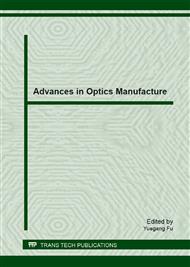p.38
p.44
p.52
p.57
p.64
p.69
p.75
p.79
p.85
Detailed Analysis of the HIRISE FPA
Abstract:
The U.S.A has launched the Mars Orbiter. It brought a high resolution imaging science equipment, and that is the High Resolution Imaging Science Experiment camera(HIRISE). HIRISE is 0.5 m reflecting telescope, which is the highest one ever carried on a deep space mission, and it has a resolution of 1 microradian (μrad), or 0.3 m from an altitude of 300 km. HIRISE can investigate deposits and landforms resulting from geologic and climatic processes and assist in the evaluation of candidate. As a high degree of lightweight ultra-high resolution camera, the design of its FPA is unparalleled .Therefore we should study and learn it carefully. In this article, first of all we discuss and analyze the characters of the HIRISE FPA in terms of the structural layout, material selection, splicing of the CCD, the CCD package, electronics, processing and transmission, and thermal control measures implementation. Next we put forward the design method of highly lightweight space optical remote sensor FPA combined with the characters of the HIRISE FPA, which can provide a reference to the design of the FPA for some space remote sensings.
Info:
Periodical:
Pages:
64-68
Citation:
Online since:
May 2013
Authors:
Keywords:
Price:
Сopyright:
© 2013 Trans Tech Publications Ltd. All Rights Reserved
Share:
Citation:


